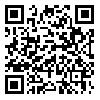Volume 24, Issue 2 (2022)
JAST 2022, 24(2): 477-490 |
Back to browse issues page
Download citation:
BibTeX | RIS | EndNote | Medlars | ProCite | Reference Manager | RefWorks
Send citation to:



BibTeX | RIS | EndNote | Medlars | ProCite | Reference Manager | RefWorks
Send citation to:
Gerami Nooghabi M, Mehrvar M, Zakiaghl M. The Complete Genome Sequences of Two Recombinant Isolates of Squash Mosaic Virus from Iran. JAST 2022; 24 (2) :477-490
URL: http://jast.modares.ac.ir/article-23-41843-en.html
URL: http://jast.modares.ac.ir/article-23-41843-en.html
1- Department of Plant Protection, Faculty of Agriculture, Ferdowsi University of Mashhad, Mashhad, Islamic Republic of Iran.
Abstract: (2048 Views)
Squash Mosaic Virus (SqMV) is a Comovirus that infects many cucurbit crops worldwide. In this study, the first two complete genome sequences of SqMV (BSQ and TSQ) from Iran were determined. The RNA genomes of isolates BSQ and TSQ were, respectively, 5,754 and 5,755 (RNA1) and 3290 and 3271 (RNA2) nucleotides (nt) in length, excluding the 3'-terminal poly (A) tail. RNA1 of both isolates encodes a single polyprotein of 1858 amino acids (aa). The identity between the two Iranian isolates (BSQ and TSQ) was 94.24% nt and 94.82% aa for RNA1 and 88.80% nt and 89.50% aa for RNA2. In comparison to other SqMV isolates, BSQ and TSQ shared the highest nucleotide sequence identities of 95.12 % to 93.56 % (RNA1), and 87.59 % to 87.19 % (RNA2), respectively, with the Spanish isolate (RZ-SqMV). Phylogenetic analysis based on complete genome sequences reveals that SqMV isolates cluster into three distinct groups. BSQ was clustered alongside a Spanish isolate in one group and TSQ was separately clustered with a Chinese and US isolates in another group. Recombination analysis revealed that BSQ (RNA1, 2) and TSQ (RNA2) were putative recombinants. BSQ had 6 recombination sites within 5'-UTR, helicase, protease, RdRP (in RNA1), SCP and 3'-UTR (in RNA2) regions, whereas TSQ had 4 recombination sites within 5'-UTR, MP (two breaking points) and LCP region.
Article Type: Original Research |
Subject:
Plant Protection/Plant virology
Received: 2020/04/5 | Accepted: 2021/01/16 | Published: 2022/02/17
Received: 2020/04/5 | Accepted: 2021/01/16 | Published: 2022/02/17
| Rights and permissions | |
 |
This work is licensed under a Creative Commons Attribution-NonCommercial 4.0 International License. |







